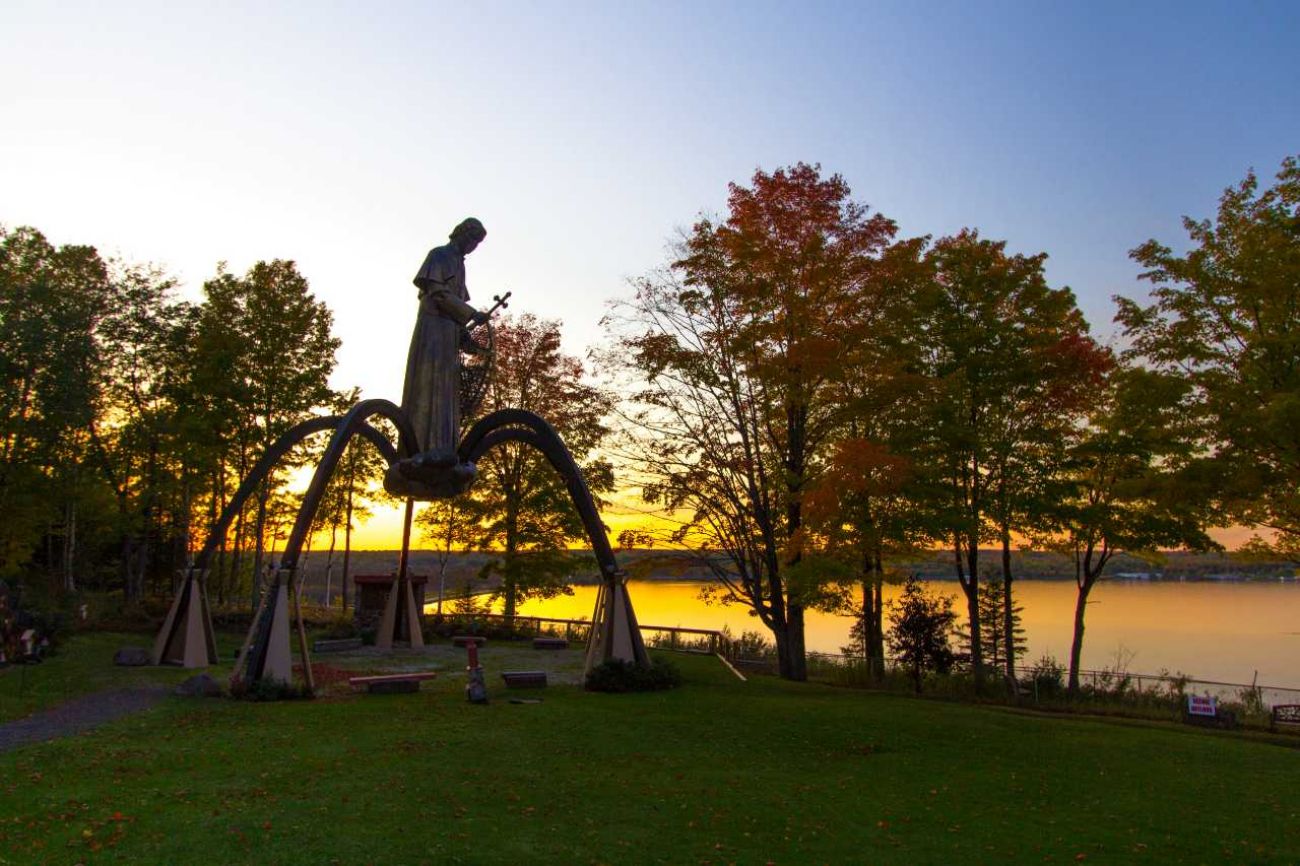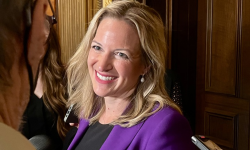Five counties in Michigan’s Upper Peninsula await arrival of coronavirus

There are just five Michigan counties without a confirmed case of the novel coronavirus.
The five holdouts, as of Monday — Keweenaw, Baraga, Ontonagon, Alger and Iron Counties — are some of the most remote and rural of the state’s 83 counties. All are located in the uppermost regions of the Upper Peninsula, and all but one have populations under 10,000 people.
How have they managed to avoid the coronavirus while surrounded by other counties with confirmed cases? According to some health department officials in these counties, maybe they haven’t.
“We have been telling all of our counties, with or without (COVID-19), that they should assume the virus is there,” said Kerry Ott, public information officer for the health department for Luce, Mackinac, Alger and Schoolcraft counties. “The virus doesn’t stop at county lines.”
- The latest: Michigan coronavirus map, locations, updated COVID-19 news
- What Michigan's new coronavirus stay-at-home executive order means
- Can you buy seeds in Michigan? Confusion reigns over Whitmer stay-home order.
- When Michigan unemployment, stimulus checks, and $600 CARES money will arrive
Public health officials in these five counties said the reasons for the zero count are unclear. It could be that COVID-19 has yet to spread to these counties, or — more likely — that there have simply been no cases severe enough to require hospitalization.
But it could also be due to a lack of testing in the Upper Peninsula. Previously, the state only allowed those hospitalized or showing severe symptoms to get tested, reserving the state’s limited test kit supply for more urgent cases.
“We had to follow the testing priorities from the state,” said Cathryn Beer, health officer for the West Upper Peninsula Health Department covering Keweenaw, Baraga and Ontonagon Counties. “We couldn’t at any point do mass testing.”
That criteria was relaxed last week to allow those with mild symptoms to get a test. The expansion will help, officials said, but according to Dr. Robert Van Howe, interim medical director for the Dickinson-Iron County Health Department, testing capacity at hospitals and labs in the area will still be limited. Much like the giant health systems in Southeast Michigan, U.P. facilities are running low on testing swabs, Van Howe said, and they need more of the special liquid used to transport COVID-19 test results from the patient to the lab.
Michigan Technological University opened a testing facility on Friday that can run 40 samples an hour, but even that has run into problems, Van Howe said. The lab is having trouble getting enough reagents, the chemicals necessary to conduct coronavirus tests.
As of Monday, 34 residents have been tested in Baraga County, 18 in Keweenaw County, 22 in Ontonagon County and 15 in Alger County, with 65 in Iron County as of last Wednesday, according to health officials in each county. That’s just over 150 people tested across the five U.P. counties, which have a combined population of 36,445.
“Whether or not [there is enough testing], or the right people, I don’t know enough to say,” Beer said.
One thing that’s certain is that Upper Michigan has yet to see a significant wave of cases, but that could soon change.
Some public health models estimate that the Upper Peninsula’s peak could arrive in as little as two weeks. Although some county health officials said this could be a reasonable guess, many emphasized that it’s difficult to predict the virus’s spread without more testing, especially for sparsely populated communities.
Van Howe said he would love to see the cases stay at zero in Iron County, but he doesn’t think that’s possible.
If cases do start to spike in these counties, health officials said they’re worried it could overwhelm the area’s resources. Specialized healthcare is limited for upper Michigan’s rural communities even during non-pandemic times, and according to several officials interviewed by Bridge, few of them would be prepared for a surge in COVID-19.
“Our local hospitals have very little, if any, capacity to handle intensive care,” said Kelly Kamm, an epidemiologist and assistant professor of kinesiology and integrative physiology at Michigan Tech.
Ontonagon County’s hospital only has about 15 beds total, she said, while Keweenaw County has no hospital at all. Some Iron County residents cross the border to get healthcare in Wisconsin, Kamm said. Local hospitals could transport patients to Marquette or downstate, she said, but that could become expensive. Who would shoulder the financial burden?
Quarantining at home could also be difficult for residents in remote areas, as getting food, groceries or other supplies delivered isn’t as readily available as it is in urban areas.
“We’ve underfunded public health as a country for decades now, and rural areas really get hit with the brunt of that,” Kamm said.
Many of upper Michigan’s rural residents already have underlying health issues, Kamm added, with high rates of diabetes, obesity and chronic lung disease.
They’re also much older. Ontonagon, Keweenaw and Iron Counties are home to Michigan’s second, third and seventh largest populations of residents over the age of 65 respectively, according to 2018 data from the U.S. Census Bureau.
“We have a large population of older people who live alone. If they do get sick, who’s checking on them?” Kamm said. “Physically, we are very distant in our neighborhoods.”
It will likely be only a matter of time before these five counties start to show their first confirmed cases, so county officials are spending the time getting ready. Health officials overseeing Keweenaw, Baraga and Ontonagon, for instance, have been visiting grocery stores and other businesses to ensure they’re following safety measures, Beer said.
The health department covering Alger County has already created plans to distribute any potential hospital overflow with other healthcare providers up and downstate. They’ve even set up a crisis hotline to help residents manage anxiety about the virus, which they can call at 1-800-839-9443.
“We don’t want them to be afraid. We want them to be prepared,” Ott said.
And until upper Michigan can get more tests, Ott said, “we cannot let our guard down.” The state may start to reopen soon, and health officials are worried that a flow of summer visitors from downstate could be what leads to the Upper Peninsula’s viral surge.
“We just have to be aware that we have a lot of people who have not been exposed to the virus yet,” Van Howe said. “It probably will get worse before it gets better.”
RESOURCES:
- Hey, Michigan, here’s how to make a face mask to fight coronavirus
- Michigan coronavirus dashboard: cases, deaths and maps
- Michigan families can get food, cash, internet during coronavirus crisis
- How to give blood in Michigan during the coronavirus crisis
- 10 ways you can help Michigan hospital workers right now
- Michigan coronavirus Q&A: Reader questions answered
- How to apply for Michigan unemployment benefits amid coronavirus crisis
See what new members are saying about why they donated to Bridge Michigan:
- “In order for this information to be accurate and unbiased it must be underwritten by its readers, not by special interests.” - Larry S.
- “Not many other media sources report on the topics Bridge does.” - Susan B.
- “Your journalism is outstanding and rare these days.” - Mark S.
If you want to ensure the future of nonpartisan, nonprofit Michigan journalism, please become a member today. You, too, will be asked why you donated and maybe we'll feature your quote next time!




